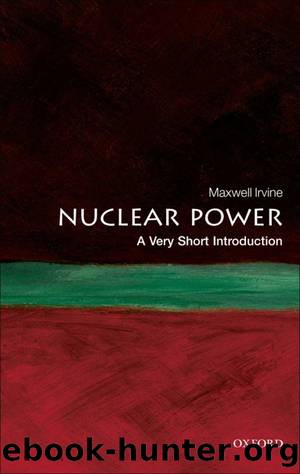Nuclear Power: A Very Short Introduction by Maxwell Irvine

Author:Maxwell Irvine [Irvine, Maxwell]
Language: eng
Format: epub
ISBN: 9780199584970
Publisher: Oxford University Press
Published: 2011-01-15T07:00:00+00:00
Chapter 5
Nuclear safety
All human activity has associated risk. Before the Industrial Revolution, apart from war, these risks were largely personal. After industrialization, the ramifications of risk are much more widely spread.
The assessment of risk can be based on the analysis of experiential statistics or on a personal subjective basis which may, or may not, have a basis in fact. A large element in subjective risk assessment is fear of the unknown. Familiar activities will be assessed as having a lower risk associated with them than unfamiliar ones. The hazard factor can be high, but the risk can be mitigated by safety precautions.
Nuclear power deals with hazardous materials. It has its origins in a weapons programme that produced the most horrendous capacity for mass destruction. A major source of danger is radioactivity which, for most people, is an unfamiliar and mysterious phenomenon. Bad news headlines sell newspapers and the media frequently report nuclear incidents in more alarmist language than other more frequent industrial accidents would attract. The horrors of Chernobyl would seem to confirm peopleâs worst fears.
The aim of our discussion of ânuclear safetyâ is to explain the risks and to present them in perspective.
The hazards of nuclear power begin with the mining of uranium. As with all mining, there are the usual hazards augmented by concerns about the radioactive nature of uranium. In nature, uranium occurs in relatively low concentrations, and thus mining it requires very large volumes of rock to be processed. Most uranium is from open pit mines. Following the exposure of the ore by drilling and blasting, it is extracted via loaders and trucks. In the form of solid ore, the low concentration ensures that there is no direct radiation hazard. However, following extraction and drilling, dust can be inhaled, and its accumulation in the body presents a serious health hazard. Workers should wear face masks at all times. The fact that they spend much of their time in enclosed cabins and vast quantities of water are used to suppress the airborne dust levels greatly reduces the exposure to radiation.
Deep-mined uranium presents a more serious risk. Uranium is an alpha particle emitter and its radioactive decay chain produces radon-222. Radon is an inert radioactive gas with a half-life of 3.8 days. As a gas, radon can be inhaled and its alpha decay is known to be carcinogenic. The problem does not exist in open-pit mining where dangerous accumulations of radon do not occur due to natural ventilation. Underground, in deep pits, accumulations can be hazardous unless adequate ventilation is installed.
Early miners of uranium were reported to have developed small cell carcinoma and some American Navajos, who mined uranium in the south-west USA, were awarded compensation in 1990 under the US Radiation Exposure Compensation Act. In 2008, Areva attracted criticism for not alerting mineworkers at its uranium mine in northern Niger to the health hazards, and air, soil, and water were found to be contaminated.
Nearly 45,000 tonnes of uranium are mined annually. More than half comes from the three largest producers, Canada, Kazakhstan, and Australia.
Download
This site does not store any files on its server. We only index and link to content provided by other sites. Please contact the content providers to delete copyright contents if any and email us, we'll remove relevant links or contents immediately.
| Automotive | Engineering |
| Transportation |
Machine Learning at Scale with H2O by Gregory Keys | David Whiting(3964)
Never by Ken Follett(3701)
Urban Outlaw by Magnus Walker(3304)
OPNsense Beginner to Professional by Julio Cesar Bueno de Camargo(3226)
Sapiens and Homo Deus by Yuval Noah Harari(2941)
Will by Will Smith(2733)
A Short History of Nearly Everything by Bryson Bill(2578)
Hooked: A Dark, Contemporary Romance (Never After Series) by Emily McIntire(2462)
Rationality by Steven Pinker(2228)
Borders by unknow(2143)
Holy Bible (NIV) by Zondervan(2055)
The Becoming by Nora Roberts(2028)
The One Percenter Encyclopedia by Bill Hayes(1753)
Freedom by Sonny Barger(1741)
HBR's 10 Must Reads 2022 by Harvard Business Review(1737)
A Short History of War by Jeremy Black(1724)
Five Ways to Fall by K.A. Tucker(1665)
Girls Auto Clinic Glove Box Guide by Patrice Banks(1653)
Go Tell the Bees That I Am Gone by Diana Gabaldon(1644)
